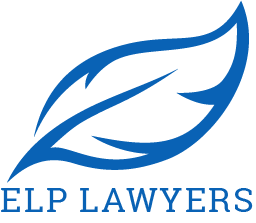Motorcycles can be challenging to maneuver and will take the utmost skill. However, should a motorcycle accident occur, it can be challenging to navigate the legal aftermath that follows.
Understanding the intricacies that surround cases of this nature is crucial for anyone involved in such an incident. This comprehensive look at the anatomy of a motorcycle accident case aims to shed light on the process, providing clarity and guidance.
Understanding the Initial Steps
The journey begins at the accident scene. It’s essential to gather as much information as possible, including photographs of the scene, witness statements, and police reports. This initial evidence forms the foundation of your case, setting the stage for what comes next.
Medical Assessment and Documentation
Health should always be the top priority. Seeking immediate medical attention not only ensures your well-being but also establishes a medical record that links any injuries directly to the accident. This documentation is vital as it can significantly influence the outcome of your case.
The Role of Legal Counsel
It becomes imperative to speak with a knowledgeable professional when considering whether to take legal action. A motorcycle accident lawyer will navigate the complexities of your case, ensuring your rights are protected every step of the way. They’ll scrutinize the gathered evidence, identify liable parties, and articulate the extent of your damages.
Investigative Process
In-depth investigation is a pivotal part of the process. Attorneys, like those at Siegal & Richardson, LLP, can attest to the importance of this phase. They delve into the accident’s details, often employing accident reconstruction specialists to unearth critical insights that may not be immediately apparent. They’ll also review traffic laws and regulations that may influence liability and compensation.
Negotiations with Insurance Companies
Dealing with insurance companies is a nuanced dance. Your attorney will engage with these entities, advocating on your behalf. Their aim is to negotiate a settlement that covers medical expenses, lost wages, and other damages. This negotiation phase is delicate, requiring a balanced approach to achieve a fair outcome.
Litigation and Trial
If a settlement cannot be reached, the case may proceed to trial. Here, your legal representative presents your case before a judge or jury. They’ll leverage the evidence and expert testimonies to paint a clear picture of the accident, your injuries, and the impact on your life. Throughout the trial, your attorney will challenge any opposing arguments and work diligently to ensure that justice is served.
Resolution and Recovery
The final phase is about resolution and recovery. Whether through a settlement or a trial verdict, the conclusion of your case brings a sense of closure. It’s also a time to focus on personal recovery, both physically and emotionally, from the ordeal.
Legal Challenges and Proving Fault
One of the more complex aspects of a motorcycle accident case is proving fault. Determining who is responsible for the accident is critical, as it directly influences the outcome of your claim. This process involves a thorough examination of traffic laws, analysis of the accident scene, and evaluation of all parties’ actions leading up to the crash. Your legal team will work tirelessly to compile evidence that supports your claim, including surveillance footage, vehicle damage reports, and expert testimony.
This phase can often be contentious, as insurance companies and opposing parties might contest your version of events. It’s here that the meticulous preparation and deep understanding of motorcycle law become invaluable. Your legal team must be adept at navigating these disputes, presenting a compelling case that clearly demonstrates the other party’s negligence or recklessness. It’s a process that requires not only legal acumen but also a deep understanding of the nuances of motorcycle operation and road use.
Final Thoughts
The process that follows after a motorcycle accident can be rife with challenges. Victims must contend with physical, emotional, and financial challenges while also facing legal intricacies.
However, with the right guidance and support, navigating this path becomes manageable. Remember, each case is unique, and having a skilled legal professional by your side is invaluable in achieving a just outcome.

